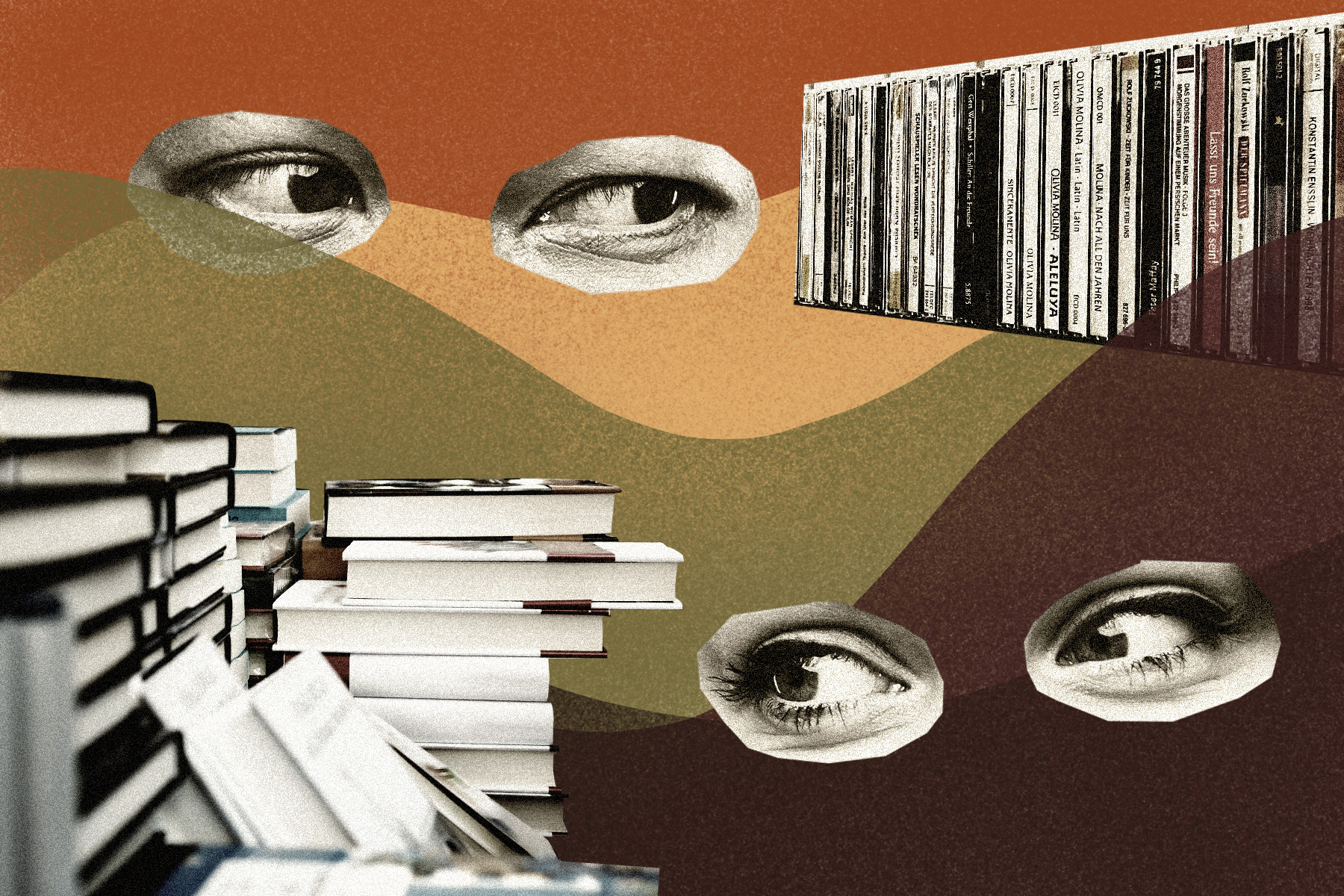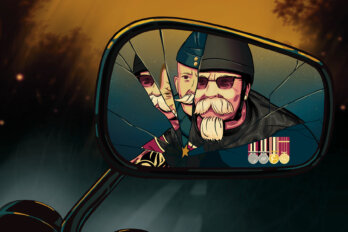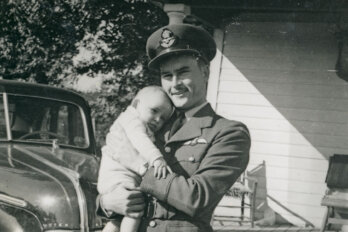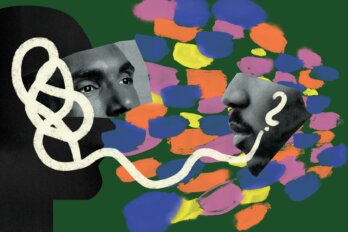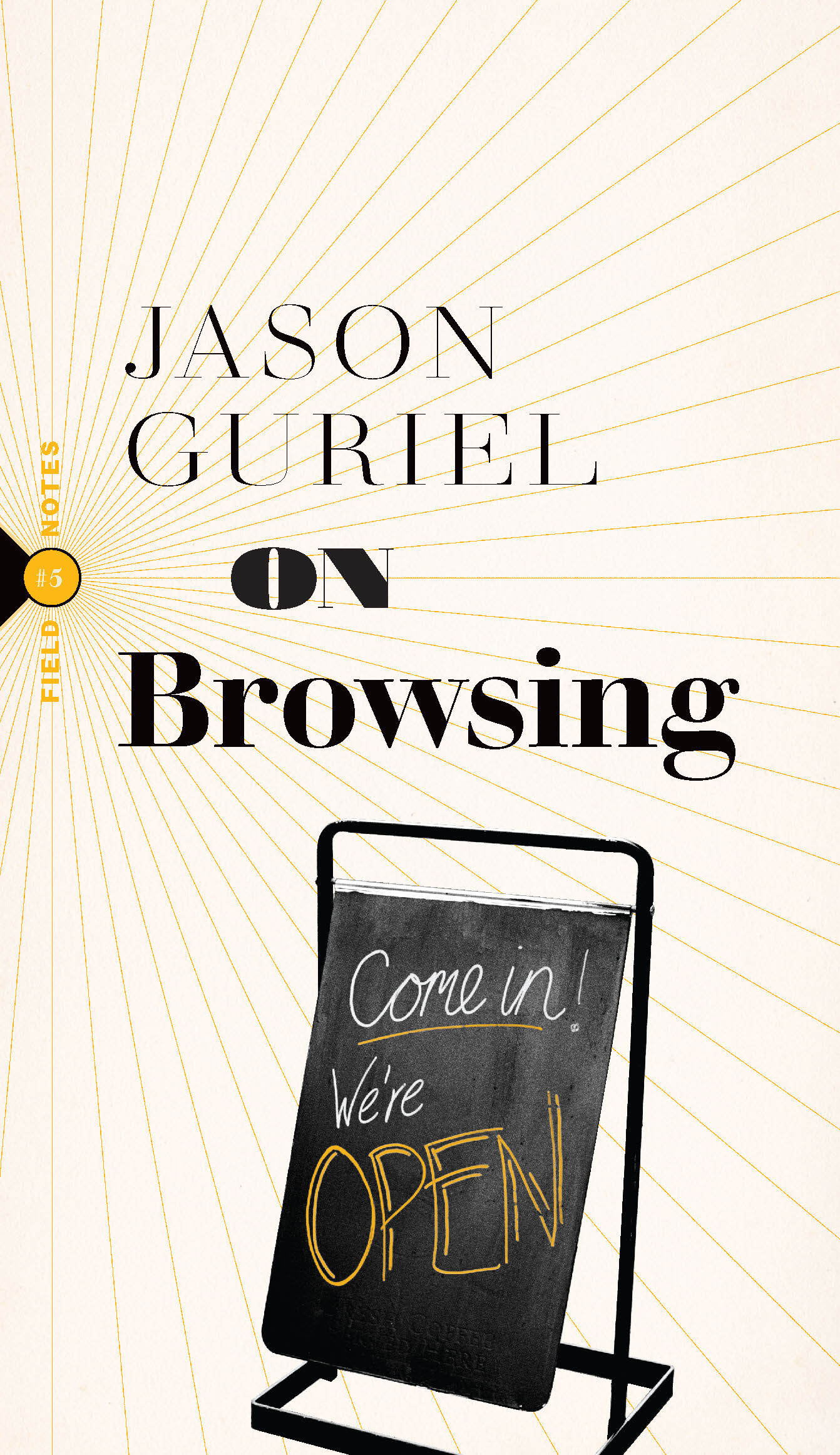 Excerpted from On Browsing by Jason Guriel. Copyright © 2022 Jason Guriel. Published by Biblioasis. Reproduced by arrangement with the publisher. All rights reserved.
Excerpted from On Browsing by Jason Guriel. Copyright © 2022 Jason Guriel. Published by Biblioasis. Reproduced by arrangement with the publisher. All rights reserved. When I was very young, there was no outlay for an annual holiday—for airfare or hotel. Nor was there much money for the extracurriculars of daily life—the little leagues, the skating lessons—that every other child appeared to enjoy. My parents could manage the mall, so that’s where we went on weekends.
This is how we did it.
First, we parked near a department-store entrance. We never entered through the mall proper; we came at it obliquely, stealing in through one of its larger tenants, like the Bay or Sears. I don’t know why this approach seemed important, but it did. And my father always parked far away. He didn’t trust other drivers not to ding his paintwork.
By this point on Saturdays—for that was the day of such trips—it was lunchtime. Thus, we made our way to the food court, a real treat given that my mom cooked throughout the week. After lunch, we typically disbanded, with a plan to meet up later.
There were variations on the ritual: sometimes, my sister went with my mother; sometimes, we hit China King Buffet en route. (Technically, it was China Buffet King, but we never got that right.) Also, “the mall,” as I have it, was one of a few within driving distance. For ease of reading, I’ve been referring to a single, abstracted form.
But, most of the time, once lunch was done, I was on my own for an hour or two. I was a teenager armed with a little bit of spending money and the freedom to roam. By “roam,” I don’t mean the thing your smartphone does. To roam was to be a body in motion, confronting the world in all its shaggy density.
What’s more, there was no way, short of arranging a mall-wide announcement via intercom, for anyone to reach me. There was no way for them to change the meet-up location or tell me they were going to be late. The lack of cellphones gave daily life a little edge back then. It was the 1990s, but it might as well have been the 1390s. I had to make it to the appointed oak tree on time.
Perhaps my memory of browsing the mall is shot through with the faintest sepia tint. I’m sure I was bored some of the time. Lunch behind me, I was typically after a specific novel or CD or comic book, which used up my spending money almost immediately and set me adrift for the remainder of the trip until the agreed-upon meet-up time. Anyway, wasn’t the mall a site of vapid capitalist consumption? Shouldn’t I have been wandering an art gallery or nudging a soccer ball outdoors? By the parenting standards of today, my family’s Saturdays would not be judged especially nourishing.
But, at least, the mall back then was modest—low ceilinged, less brilliantly lit, and compact. The scale was human and the stores affordable. They served the needs of the browser, not of the brand.
The architect Victor Gruen, a socialist of all things, designed the world’s first mall, the Southdale Center in Edina, Minnesota, which opened in 1956. He envisioned it as an atoll of community in the pedestrian-proof suburbs. Homes would huddle around the mall, which would possess all the necessary amenities: post office, library, art, what have you. In a newspaper article from the period, Gruen and economic consultant Lawrence P. Smith describe a utopian vision:
[Malls] will welcome the hordes of automobiles which approach them, providing easy access and ample free parking space. They will offer restfulness, safety and esthetic values. They can become places where suburbanites will visit for a short shopping trip and also centers where they will want to congregate for many hours.
Gruen’s utopian vision never quite came to pass. Stoking consumption became the primary goal of malls. What’s more, the department stores that anchored the smaller original malls eventually fled for the mega structures of the 1990s. The megamalls ate up their modest forebears—and then online shopping came for the megamalls, one yawning whale swallowing the next. Naturally, you can now inspect spooky photos of empty, abandoned malls online. Like Star Trek’s Borg, the internet coolly, ruthlessly assimilates the carcass.
Some of the megamalls of my childhood, like Sherway Gardens and Square One, have survived by metastasizing. They’ve sprouted new wings, as cavernous as airport terminals, boasting ever-more-luxurious concerns. (They sit in the suburbs of Toronto and have oodles of unused parking space to work with.) The odd time I’ve revisited one of these augmented malls as an adult, I’ve felt scandalized, even foolish. My contemporaries and I had made do with so much less! Our less-mega twentieth-century malls offered claustrophobic brickwork, dimly lit food courts, and nondescript brands. Should we have been wanting malls with Louis Vuittons all along? Or the sort of two-storey bookstores that stock pillows extolling the virtues of cottage life?
For the record, I liked browsing that smaller, older, dingier kind of mall on my own, even if it was sometimes boring and the corridors weren’t the width of hangars. Plus, I had my father as an example.
Dad was the purest of browsers. He rarely bought anything. “Just browsing,” we sometimes said when we wanted the sales associate to back off. Dad was always just browsing. He loved to visit expensive watches, ties, and pens in their display cases, hands clasped behind his back. He was born in 1922, could summon memories of the Great Depression, and didn’t possess a credit card until late in life. If he wanted something, he saved up for it—and while he saved up for it, he visited it. To browse was not merely to consume. To browse was to move among beautiful objects. The mall, as Dad saw it, was something like a gallery. Sometimes, in my solo post-lunch wanderings, I would stumble on him enjoying the Rolexes and Omegas. (An awkward delight of browsing on your own was running into the person you weren’t yet scheduled to meet up with.)
Browsing, I came to learn, was best when it was aimless and inefficient. It took the long way or, what Dad called ironically, without fail, “the scenic route.” Dad always preferred the scenic route. After a trip to the Eaton Centre, Toronto’s big downtown mall, we’d inevitably go south on the subway and loop back up to the main line rather than simply head north to begin with, which would’ve saved us a couple of stops.
Dad also loved browsing downtown. When I was still too young to break off on my own, he would drag me along to some of his cherished haunts, like Arcade Coin & Stamp Galleries and Remenyi House of Music. (He collected stamps and played the violin in his spare time.) Arcade and Remenyi were sites of serious browsing, invariably manned by older men and pickled in silence. I would wait for Dad as he leafed through swollen binders of stamps or scrutinized violins he would never buy, trussed up like lacquered ducks. Sometimes, he was after a specific stamp or, say, an E string, if he had broken one. I had no device with which to distract myself, so I browsed too. Or circled the store like fish in a tank. To be a child back then was to be in tow.
Ispent a lot of time dribbling balls as a kid. I spent a lot of time in my head. To be “in your head” is now understood to be a bad thing, but I had nowhere else to be. Virtually no other kid lived on my street; what children there’d been had grown up and moved on, leaving behind senior citizens not quite ready yet to yield their homes to younger families. So I’d bounce a ball against an outer wall of our bungalow over and over and tell myself stories. I must’ve made a pitiful sight for Hilda, the elderly neighbour whose house faced the best wall for ball action: a boy at loose ends.
I biked a lot, too, more stories in my head. (My parents did not require me to protect the head with a helmet.) I came to like biking around the same streets and alleys over and over. Even with ten minutes of daylight left, I would roll my bike down the driveway and take a last turn around the block. I biked until August 31, 1997, when I blew a tire coming home from a friend’s house. I’d gone to retrieve some physical media, my copy of Oasis’s album Be Here Now, before the friend left for university. I was to start university, too, and soon I would be too busy to bike. The blown tire never got fixed, and the bike mouldered in the garage. I know the date of the blowout because that was the night Princess Diana died.
Still, as a child, and by dint of my parents’ benign neglect, I learned to be okay with repetition. With boredom. I reread books, rewound VHS tapes, and browsed the same shops and shelves in malls like Cloverdale. I like to think I was preparing for a future in letters. You have to develop a deep tolerance for boredom, I told myself. You have to have habits.
Even after I’d left the suburb behind, I never quite kicked the habit, acquired from my family, of aimlessly browsing the same shops and shelves. For example, when I was a student, I was always at the York University Bookstore, trying to run out the clock before class. Later, for the better part of a decade, I worked near the University of Toronto. At lunchtime, I usually sat at my desk, ate my lunch, and went online. (In other words, I scrolled.) But, quite often, with twenty minutes of lunchtime left to kill, I hustled over to the U of T Bookstore, a tempting block away. Most of the time, I had no goal, no book in mind. It was enough to be among books.
It was always enough to be among books, even if they were the same ones every day. I came to know the titles at the U of T Bookstore; I came to know the contents of many stores and libraries when I had cause to be near them for a while. The familiar spines were a comfort. Plus, the occasional new spine, when it did appear, behaved like poet Kay Ryan’s description of a “drop of ink, the tiniest bit of new per old,” blooming in the mind like dye in water.
Maybe this sounds boring, an intolerable state in the Age of Scrolling. Scrolling, after all, promises an antidote to boredom. It promises choice, abundance, novelty, diversion, something to do. We scroll to stave off an intolerable state. We scroll to avoid being alone with ourselves. But boredom is a natural condition, the fishbowl medium a mind should be able to swim in. In fact, research suggests that boredom is even good for the brain—for creativity, productivity, that sort of thing. My parents’ benign neglect had neuroscience on its side.
When Dad gave up driving, we’d walk to the nearby Cloverdale Mall for a slice of pizza. I had to slow my pace to match his—another longueur to endure. But Cloverdale still maintained a record shop and a Coles. Plus, I could always linger near the magazine rack in the adjoining grocery store and riffle through The Atlantic Monthly, as it was then called. (They’ve since lopped off the “Monthly”—progress!) There was a better newsstand in the mall proper, but the grocery store didn’t hassle you. I still recall reading Caitlin Flanagan for the very first time, standing amid the clatter of shopping carts, and a wonderful David Barber poem called “Bambino Sutra.”
The long hallway to the washrooms displayed photos of the mall dating back to the 1950s, when Cloverdale was open air. Eventually, management walled the mall in. In the 1980s, when I was a little kid, the interior smelled of cigarettes. Stars of daytime television made appearances. Santa Claus too. Something of Gruen’s vision of community lingered in Cloverdale, like second-hand smoke. My father and other senior citizens would coalesce in the food court, nurse a coffee, and kibitz. Later, after he passed away, my mother, who had a hard time making friends, found her own strands of community there.
I’ve browsed Cloverdale all my life. The Coles, originally a W. H. Smith, was effectively my library. (It took too long to walk to a real library.) There, in the 1990s, I discovered and bought David Foster Wallace’s Infinite Jest, a book I’d never heard of. The sudden appearance of its distinctively wide and orange spine caught my attention only because I knew the shelves of Coles as another child, with a more bucolic childhood, would’ve known the shoreline of his local creek. It rippled my brain, that orange spine. Another droplet of change.
Cloverdale’s bakery produced the best chicken pies, and the music store always seemed to stock at least one copy of whichever album my teenage self most needed at any given moment.
Many years later, my wife came to know the pleasures of Cloverdale when Target briefly passed through it. I enjoyed introducing her to the rest of the mall, the backdrop of my less-than-bucolic childhood. Maybe I would’ve preferred showing her around some scenic small-town main street. Or the football field where I’d consolidated my adolescent triumphs. But Cloverdale was what I had to show her. It was the creek I’d sloshed around in.
The pandemic has helped hasten the end of shopping malls. But malls have been in decline for years. Around the summer of 2020, there were about a thousand left in the United States. Research suggests that a quarter of them will close within the next five years. Amazon, naturally, is eyeing the carcasses. It’s been reported that the online shopping empire has been talking to the largest owner of malls in the States, Simon Property Group, about turning vacant department stores into Amazon fulfilment centres. For my part, I’d rather we left our malls as abandoned hulks—fodder for spooky photographs. A civilization should have to reckon with its losses. Some of us aren’t done mourning.
Cloverdale, of course, is doomed. A looming condo development—with a handful of stores quoting its early open-air history—will soon uproot the mall. The proposed concept art sure looks utopian. There are model-train trees, pedestrian paths, and a gesture at a playground. Apparently, the Cloverdale name will persist.
It’s all wrong, though. It’s not grubby enough. My late father’s brand of pure browsing surely won’t be tolerated by the condo owners.
Still, I wouldn’t necessarily wish my childhood on my own children, even if I do hope they can learn how to be alone with themselves, a skill that seems to have gone the way of cursive. Perhaps it’s strange to mourn the mall—to mourn an institution that put paid to many smaller independent shops. (The mall will always be less likeable than main street.) In any case, that childhood—free of weekend shopping and smartphone alerts—has gone the way of dinosaurs, the dodo, and Sears. Being left to your own devices now means never being bored again.

